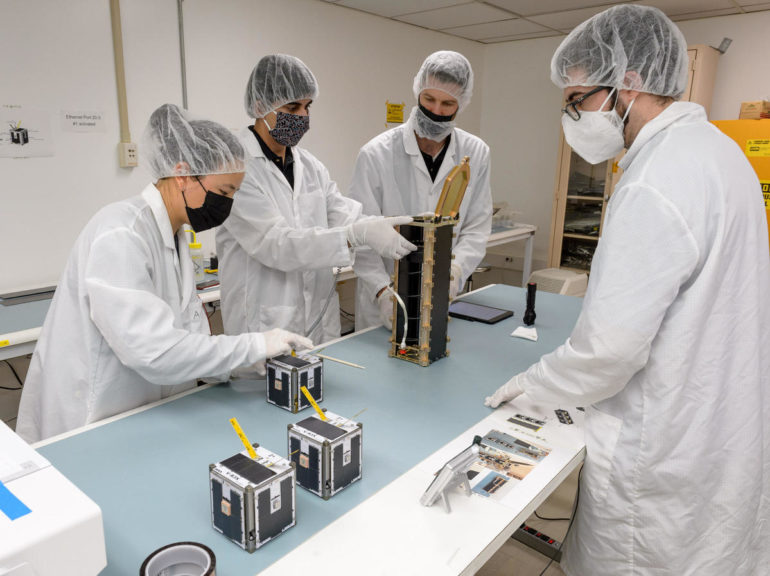A NASA mission now underway after a January launch will be an experiment to maximize the effectiveness of CubeSats by demonstrating how they might track and communicate with each other. This is a crucial step toward development of swarming satellites, which could number in the thousands and work cooperatively to aid in communications, imaging, and forecasting tasks.
“This mission is a precursor to more advanced swarming capabilities and autonomous formation flying,” explains Zac Manchester, an assistant professor in Carnegie Mellon University’s Robotics Institute and the mission’s principal investigator.
For the past decade, interest in small satellites has led to a rethinking of how to apply satellite technology to a variety of challenges. The norm for many applications is no longer exquisitely expensive hardware but rather a new generation of tiny, relatively cheap satellites known as CubeSats.
Read more: SpaceX launches off more Starlink satellites as part of its first ride-sharing space service
But the way those small satellites function, while evolving, still bears much in common with traditional satellite technology: Most satellites now are individually controlled from the ground. The vision for the future involves not only autonomy but also coordination. Massive satellite swarms that function as a single entity would be able to take on some intriguing tasks. Possibilities include swarms of satellites around the moon to provide communications and navigation aid for lunar exploration, a job well-suited to an autonomous swarm.
The new mission, dubbed V-R3x, will test three CubeSats, as well as underlying technologies that might make autonomous swarms possible.
It’s notable that Manchester’s home base is the CMU Robotics Institute, a prestigious incubator of cutting edge robotics technology. As aspirations for space exploration, utilization, and colonization expand, the necessity for autonomous technologies, including robots, to help humans get a toe hold outside our home planet has become evident.
“Spacecraft are robots, too,” says Manchester. “The satellites will wake up and do their thing autonomously,” he explained. “We mainly need to make sure that we get their data downloaded.”



